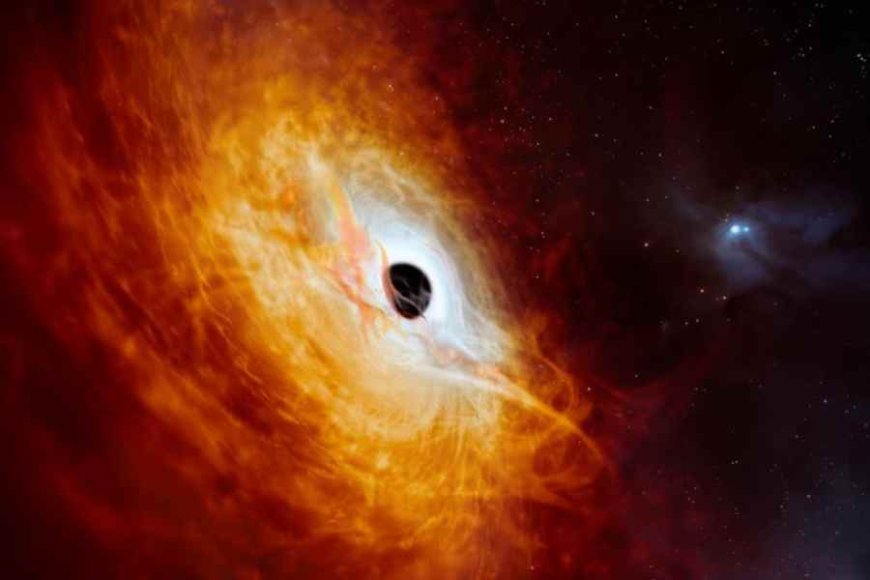Discovery of the Brightest Quasar: Insights into a Rapidly Growing Black Hole
Astronomers Unveil J0529-4351, the Fastest-Growing Quasar in History

A far-off quasar driven by a supermassive black hole that consumes the mass of one Sun-sized star per day is wrongly identified as a star in the Milky Way galaxy.
On Monday, a global group of scientists announced that the object possessed a supermassive black hole with a mass around 17 billion times that of the Sun, making it the brightest and fastest-growing quasar found to date. Its light took 12 billion years to reach Earth because it is so far away.
The brightest objects known are quasars, which were originally identified in 1963. Quasars are galaxies with supermassive black holes at their centers that eat gas, dust, and everything else within their gravitational pull. This feeding process releases vast quantities of energy.
Astronomers have documented around a million quasars in the last sixty years.
When J0529-4351, the newly discovered quasar, first surfaced in a sky scan in June 2022, it was mistakenly identified as a star. However, recent investigations have shown that it is a quasar with a core supermassive black hole that is accreting material at a pace equivalent to 370 Sun-like stars year, or around one Sun per day.
Christian Wolf, an associate professor at the Australian National University, and his colleagues from Chile and France claimed that J0529-4351 is the most extreme known quasar in terms of brightness and expected development rate in an article that was published in the journal Nature Astronomy on Monday.
"We've found the fastest-growing black hole to date," Wolf said in a press statement issued by the Chilean astronomy institution, the European Southern Observatory.
The quasar is more than 500 trillion times brighter than the Sun due to the energy released by the matter that is being drawn in the shape of a disk towards this black hole. According to a press statement from the European Space Agency, "all this light comes from a hot disc measuring about seven light years in diameter," which is ANU student Samuel Lai.
However, the black hole sustaining this quasar is not the greatest supermassive black hole discovered to far, with a mass of 17 billion solar masses. Its mass is about one-third that of another quasar.
A long-standing mystery is the process behind the black holes' quick accretion of material in quasars. A galactic merger, which would result in two galaxies colliding and providing the black hole with much more "food" than would be conceivable from a single galaxy, is one theory that may be put forward.
Wolf and colleagues used data from the ANU telescope in Australia last year to determine the object's classification as a distant quasar. Next, they made more accurate observations from the ESO's Very Large Telescope in Chile's Atacama desert using the bigger telescope and measurements.
Except for the headline, this story has not been edited by Press Time staff and has been published from a syndicated feed.























































